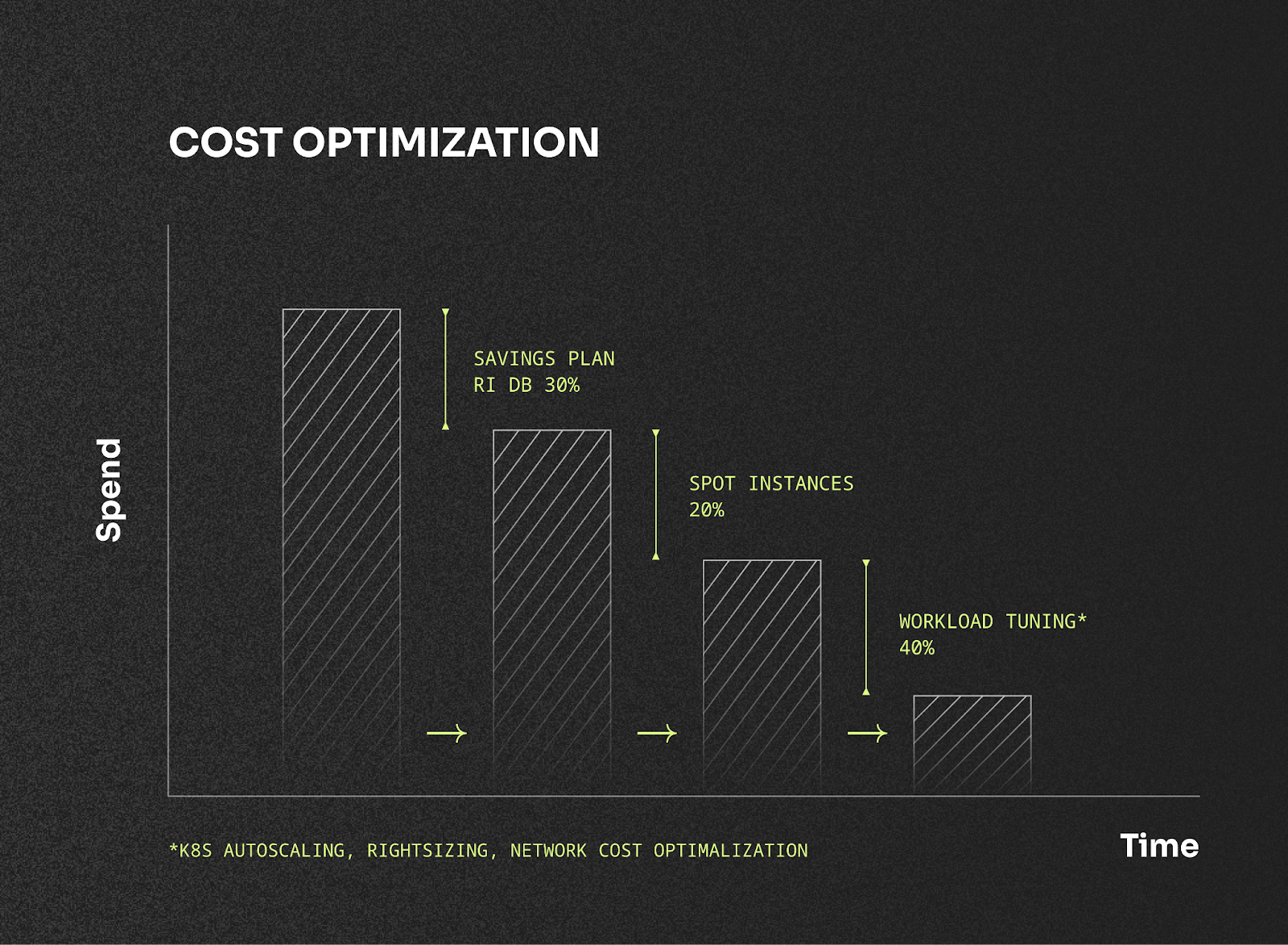There are no shortcuts here. Cloud cost optimization isn’t about clever billing tricks. It’s about engineering maturity. If you’re serious about lowering your cloud spend without breaking your velocity, read on. We’ll break down what really works and what’s just smoke and mirrors.
In conversation after conversation with customers, a familiar pattern emerges.
Cloud costs are rising. Leadership wants them down. The default response?
Buy some Reserved Instances. Ask for more credits. Maybe install a tool that promises to “optimize” spend with a few clicks. Just do it quickly and without any engineering work.
But here’s what really happens:
- The finance team tries to fix engineering problems with spreadsheets.
- Developers aren’t held accountable for what they deploy, so they don’t optimize.
- Teams rush into savings plans without understanding how they actually use the cloud.
- Everyone celebrates “savings” based on unrealistic on-demand pricing models.
Sound familiar? If so, this post is for you.
The Illusion of Discounts
Yes, you can potentially save money with:
- Reserved Instances [RIs]
- Savings Plans
- Committed Use Discounts [CSP]
- Enterprise Agreements or negotiated volume discounts
But these mechanisms are financial commitments, not optimizations. They reward predictable, well-architected workloads, which many customers simply don’t have. Locking into a long-term commitment without understanding your actual usage can turn into waste on autopilot.
And it’s not just cloud providers pushing this narrative. A whole ecosystem of third-party “cloud cost optimization” vendors promises dramatic savings. But in practice, many of these tools rely on superficial tactics: reclassifying spend, applying minor configuration changes, or auto-purchasing commitments, all without addressing the architectural inefficiencies driving the cost in the first place.
Worse, they often inflate their impact by comparing your current spend against full on-demand pricing. That’s an unrealistic baseline that few mature workloads actually use. The “savings” look great on a slide deck, but they’re often just the result of committing to pricing plans you could’ve bought directly, without paying a third party a cut.
Discounts shift cost. They don’t reduce it.
Without fixing the root architecture or usage problem, you’re just hiding the symptoms.
Don’t fall for it.
Discounts and cost tools are useful after you’ve done the hard work of tuning your architecture, rightsizing your workloads, and gaining real visibility into how your cloud environment behaves.
Discounts are a tactical lever. Real cost optimization is strategic, and it starts with engineering.
Credits Are Not a Cost Strategy Either
Cloud providers often offer credits for startups, migrations, or service adoption. These are helpful to kickstart your journey or offset migration risk. But they’re temporary. Relying on credits as a long-term cost management strategy is like balancing your household budget by using coupons. It doesn’t scale, and it doesn’t address the root issue.
Real Optimization Demands Engineering Work
If you want meaningful, sustainable cost savings, you need to look under the hood. That means investing time in engineering practices that directly influence how efficiently you use cloud resources:
- Right-sizing: Identify overprovisioned VMs, containers, and databases. Tools like AWS Compute Optimizer or GCP Recommender can help.
- Architectural design: Use auto-scaling, Spot Instances, serverless, or event-driven approaches to match capacity to demand.
- Storage lifecycle management: Delete unused snapshots, archive cold data, and apply lifecycle policies.
- Observability: Set up monitoring and alerting for anomalous usage, such as unexpected spikes in egress traffic or unbounded resource consumption.
- Network cost awareness: Minimize inter-zone or inter-region traffic.
- Resource lifecycle management: Make sure you shut down everything you don’t use, including VMs, snapshots, and EC2.
- Deployment hygiene: Tear down dev or test environments when not in use. Consider infrastructure-as-code to make it repeatable and controlled.
- Chargeback or FinOps models: Introduce accountability by mapping cloud spend to teams or projects.
These practices require collaboration between finance, engineering, and product teams. A cultural and operational shift often referred to as FinOps.
Pain Now, Gain Later
It’s easy to avoid this work in the short term. Engineers are busy shipping features, and the billing dashboard is someone else’s problem. Until the invoice becomes everyone’s problem.
Treat cost optimization like performance tuning or security. It’s part of building a robust, production-grade application. The earlier you start, the better the compounding effect.
It’s easy to defer cost optimization. Engineers are focused on features, and cloud bills are often seen as someone else’s problem. Then they explode, and suddenly everyone’s on the hook.
But treating cloud cost like a finance-only issue is a mistake. It’s no different from performance tuning or security. It’s a core part of building a resilient, production-grade application.
The earlier you start, the more impact your decisions will have. And you don’t have to reinvent the wheel. Using or building an internal platform like LARA helps standardize best practices, improve visibility, and reduce the engineering overhead of cost-conscious architecture from day one.
Cost savings are a consequence, not a goal.
You can’t optimize your way to success. If you have a strong engineering culture that values observability, ownership, and simplicity, cost efficiency will follow. In the long run, that kind of discipline is what enables you to ship better products, faster, and with less waste.

Final Thought: Invest to Save
There’s no silver bullet. Cloud bills don’t shrink magically or by spreadsheet alone. But with intentional architecture, meaningful visibility, and a strong engineering culture, you’ll not only achieve sustainable cost savings. You’ll build a better product.
Cost efficiency isn’t the goal. It’s the side effect of doing things right. And with the right platform foundations in place, like LARA, that journey becomes faster, repeatable, and a whole lot less painful.





![[Part 2] Karpenter: An Opportunity to Reduce your Cloud Bill](https://cdn.prod.website-files.com/66ba18ab4a29ff8fa3193c1a/6705244762aba5c89547d094_Karpenter%202.avif)

